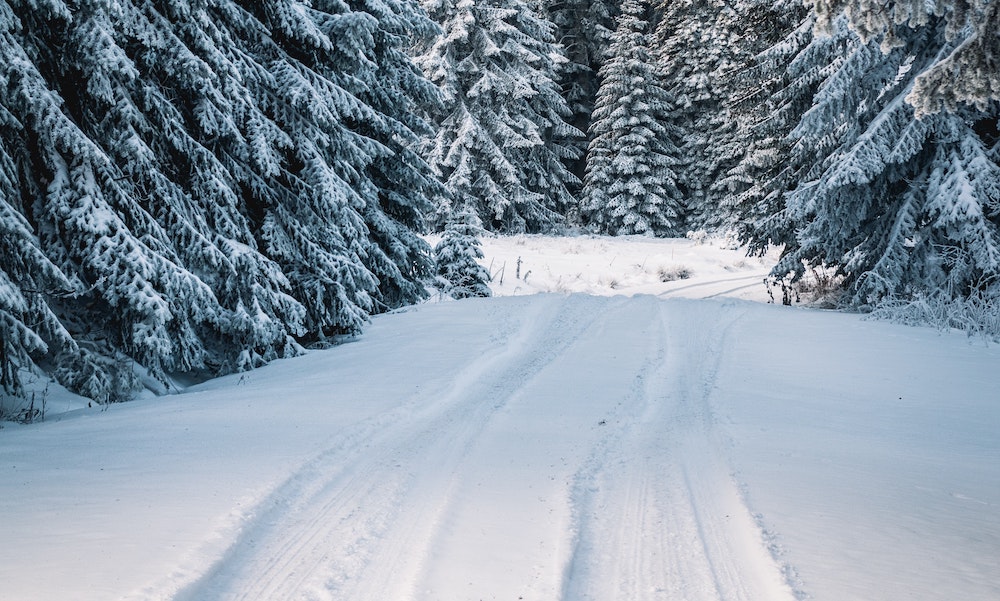Snow can be fun, but its also a real challenge to traveling. Teens need the most help, because safe driving in snow is a lesson best learned in advance.
(Photo by Burak K from Pexels)
When you’re a teenager, the idea of getting your license and heading out on the open highway is exciting. But as a parent, you’ll no doubt be concerned about the safety of your child when they’re behind the wheel. That’s especially true during the winter months, when inclement weather and driver inexperience can add up to disaster. Thankfully, safe driving in snow takes only a few simple lessons and some experience.
More BuzzChomp: A New Age Of Running Without Expectation
While 76,000 pedestrians were injured in U.S. traffic accidents during 2012, young drivers remain the most likely to become involved in crashes. As such, it’s essential that parents prepare any teenage drivers in their household for snowy conditions. Reacting appropriately when traveling during winter weather often comes with experience, but our tips for teen drivers will ensure a safe ride no matter what.
Maintain safe driving distance and speed
Many drivers, regardless of experience, travel at unsafe speeds. In 1964, an AC Cobra Coupe famously reached 186 miles per hour. While impressive, this is something you should absolutely not mimic. In winter, it’s even more important to refrain from speeding and actually travel below the speed limit on snowy roads. If your teens are worried about other drivers becoming impatient, remind them that no one owns the road. As long as they’re in the right-hand lane, other cars can pass them on the left. It’s better to arrive safely than to tempt fate by speeding in snowy conditions. They should also accelerate slowly and give themselves plenty of time to brake. Expect the unexpected.
In addition to altering their driving style, one needs to maintain a safe driving distance. Under normal conditions, your teenager should keep at least one vehicle length between themselves and the car in front of them. But in the winter, it’s best to give even more leeway. Safe driving in snow means added caution, especially when traveling behind a plow. Your teen should provide at least 200 feet of space for snowplows. Slower speeds and added room helps avoid accidents in the event that someone stops short or the roads become icy.
Ensure all auto features are working well
Coatings are meant to both decorate and protect the inner workings of the machine, including automobiles. But a car’s paint job, along with your teen driver, needs protecting from the elements. You’ll want to take steps to ensure the vehicle is in excellent condition. Take your car in for a tune-up and ensure that the brakes, tires, battery, wiper blades, and headlights are functioning as they should. Teach your teenager how to check the tire pressure of the car, how to correctly use a snowbrush, and how to defrost the car’s windshields. Make sure your teen knows to check their rearview mirrors, heat, and other essential functions of the vehicle before they ever leave the driveway. Then show them who to call for roadside assistance, should they need it.

Practice in a parking lot
Teaching your teenager to drive doesn’t end when they obtain their license. It’s a good idea to teach them safe driving in snow with some hands on experience. One of the best things to do is to find an empty parking lot that hasn’t been overly plowed or salted. Then they can get a feel for icy roads in a semi-controlled environment. Have them avoid using any technological safety features. This will allow them to see just how adept their car is at handling quick acceleration and braking in the snow, or how to adjust if they hit an icy patch. That way, they won’t panic when faced with the real thing.
Follow proper protocols on slippery roads
Some of the most important teen driving tips for winter conditions involve which protocols to follow when roads are slippery. An inexperienced driver might be quick to slam on their brakes if their car starts to slide. That’s actually the exact opposite of what you should do because it can cause the car to hydroplane. Instead, experts say that the driver should avoid quick motions when their car loses traction. Slowly ease onto the gas and steer the car into the right direction until the vehicle gains traction again.
Also on BuzzChomp: How To Get Fit Cycling and Stay Safe
As a rule, drivers should avoid overpasses and bridges in wintery conditions. These will freeze more quickly than the road itself and can be extremely slippery. Your teen also must learn to recognize and avoid black ice. If their car starts to slip on black ice, make sure they know to keep the steering wheel as straight as possible, avoid hitting the brakes, and lift their foot off the accelerator. If they can shift into a lower gear or slowly steer toward an area with more traction, they should do so.
Stay calm (and stay home)
In winter weather, cooler heads really do prevail. Panic and fear will only make a young driver resort to instinct rather than training. When teaching your teenager to drive, encourage them to stay as calm as possible while still taking this responsibility seriously. Avoiding distractions is a must, of course, but it’s also important to remember to breathe. Take things slow, and make smart decisions.
That said, it’s really best to avoid this scenario entirely. One of the most important teen driving tips for winter weather is to stay off the roads altogether. If a weather advisory has been issued, you may need to put your foot down to keep them safe. Even if you have full confidence in their skills, remember that there are other drivers to worry about. A split-second choice on another driver’s part could change your teenager’s life forever. Establish some house rules about weather conditions and driving privileges for their safety until they are more experienced.
Teaching your teenager to drive is never easy, but it becomes even more difficult during the winter. Safe driving in snow requires patience and practice. With any luck, these teen driving tips will keep your loved ones safe, even in hazardous weather.
BuzzChomp is an affiliate for products and services recommended herein. Please read our Full Disclaimer for further information on affiliate programs and opportunities.












